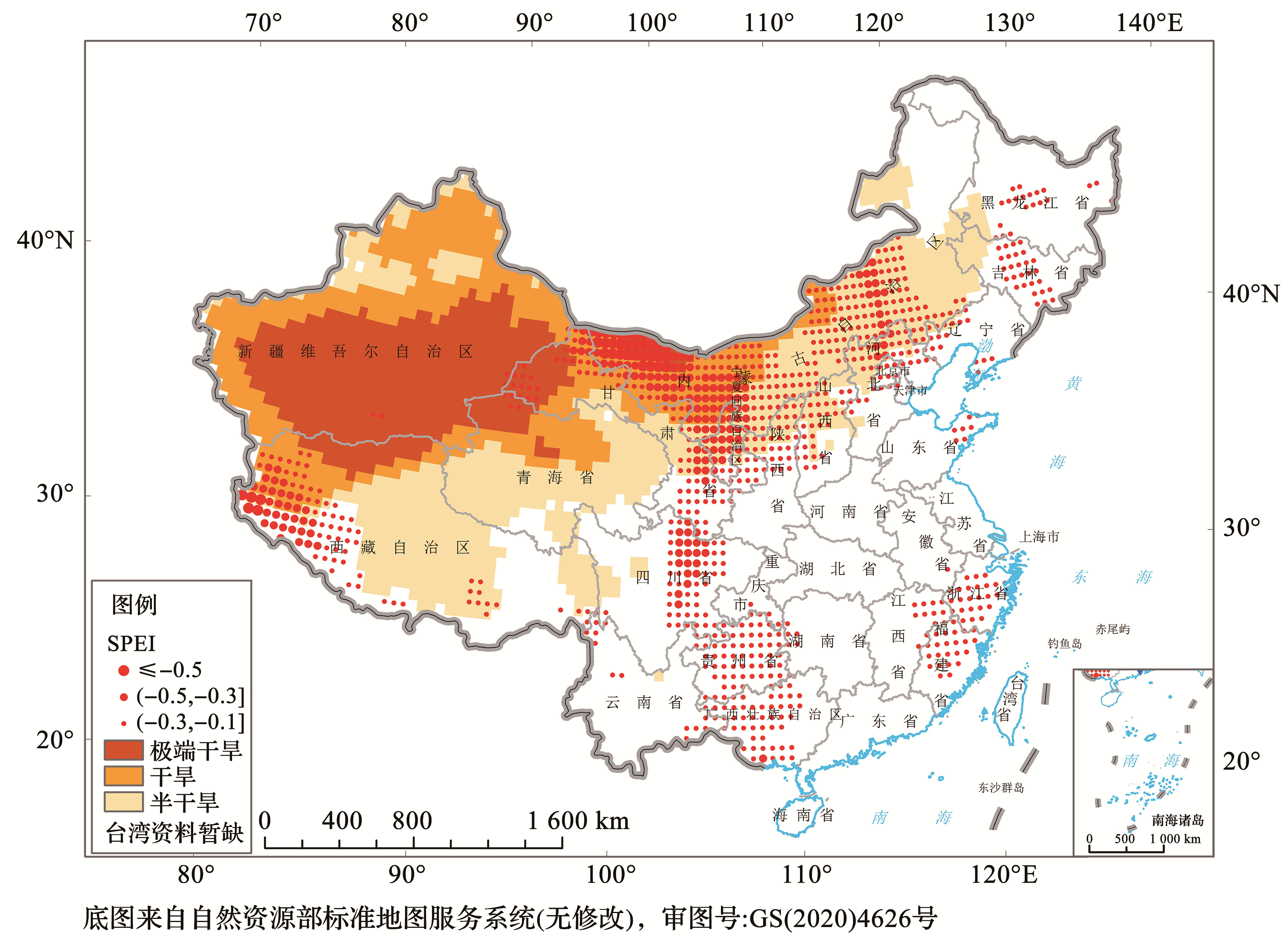青藏高原—沙漠的陆—气耦合及对干旱影响的进展及其关键科学问题
Advances and Key Scientific Issues of Land-Atmosphere Coupling Between the Tibet Plateau and the Northern Desert and Its Impact on Northern China Drought
图1. 基于SPEI指数划分的我国干旱半干旱地区和干旱频发区(据参考文献[
圆点表示1981—2010年气候平均小于-0.1的标准化降水蒸发指数SPEI(12),即SPEI(12)<-0.1,反映该地区易发生气象干旱
Fig.1. Arid and semi-arid regions and drought-prone regions based on SPEI index in China(redrawn according to reference [
The dots represent the 12-month standardized precipitation evaporation index SPEI(12)which is less than -0.1 over 30-year climate average from 1981 to 2010,that is,SPEI(12)<-0.1,shows that this region is prone to drought in climate

